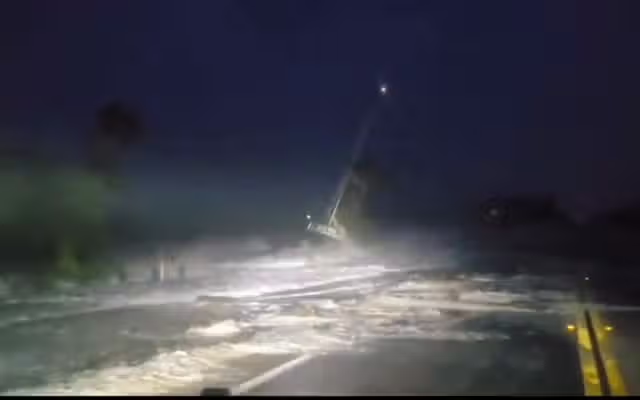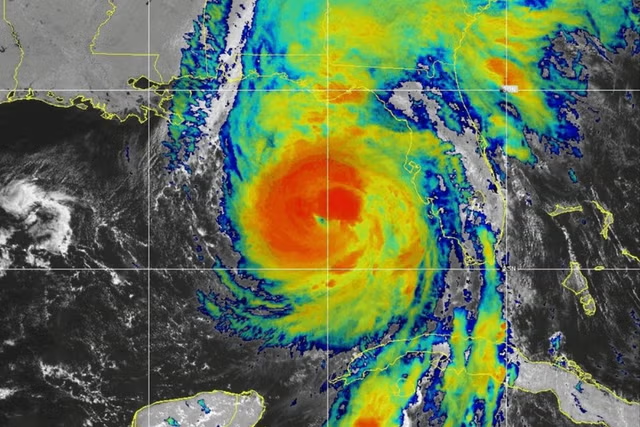The drone war, one of the defining features of the more than two and a half years of full-scale war in Ukraine, evolves at a blinding pace. Hundreds of airborne drones zip across the skies above the front lines each day, ticking off tasks ranging from reconnaissance to targeting, as well as kamikaze strikes designed to take out enemy armored vehicles, personnel and positions.
Among the most famous are cheap first-person view (FPV) drones, well known by now for zooming over the battlefield and capturing footage routinely shared online by both Russian and Ukrainian sources. Often, the video feed will cut off sharply as the drone careens toward its target and explodes.
But although Ukraine's stockpiles of various types of explosive drones are a crucial part of its unmanned aerial vehicles strategy, "we are short, very short on explosive substances," Vadym Mazevych, a former commander of the UAV battalion of the 3rd Separate Assault Brigade, told Newsweek during an interview in the Ukrainian capital on the sidelines of the Yalta European Strategy conference, organized by the Victor Pinchuk Foundation.
Some Ukrainian operators have turned to scavenging unexploded Russian shells and attempting to take out the explosives, Mazevych said via an interpreter. It is a task fraught with danger, but "we do need communication systems for these drones, and we need explosive substances."
"We need a lot of it," Mazevych added.
Also speaking in Kyiv was Serhii Varakin, the commander of a drone unit under Ukraine's 58th Brigade, who described this as "quite a long-standing problem."
Ukrainian forces have been "cannibalizing" unexploded ordinance to use against Russian troops, Varakin told Newsweek, also through an interpreter.
"We have been short of explosives for a long time. It is a big deficit, and we need a lot of them. We need them in large volumes," Varakin later said in written comments to Newsweek.
Ukraine's drone operations on land, in the air and on the water are huge. Throughout the war, Kyiv has said its drone production is on the rise, and new designs almost constantly debut on social media. In late July, a Kyiv defense official said Ukraine was able to produce more than 3 million drones each year, with this propped up by financial support from Ukraine's international backers.
Ukrainian President Volodymyr Zelensky said in February that Kyiv would create a new branch of Kyiv's military, known as the Unmanned Systems Forces, dedicated exclusively to drone warfare. "Drones, unmanned systems, have proven their effectiveness in battles on land, in the sky and at sea," the Ukrainian leader said.
Earlier this week, Ukrainian Defense Minister Rustem Umerov said in an interview with Ukrainian media that Kyiv had developed a "very thorough and extensive" plan to lay out how Kyiv will produce drones, electronic warfare equipment and ground robots for the next three years.
The problem, Kyiv officials stress, is funding. Ukraine's capability far outstrips the money being funneled into the more than 250 companies involved in drone production, said Oleksandr Kamyshin, Ukraine's former strategic industries minister, who is overseeing Kyiv's defense industry.
"It's so frustrating, it's so embarrassing, to be capable but not to have enough resources" for the defense industry, Kamyshin, now a presidential adviser on strategic affairs with a focus on the military-industrial complex, told Newsweek.
Varakin said, "Ukraine is capable of producing a lot of things, and we are more creative than Russians. What we need is the ability to produce a place for this production and, of course, financing."
"Funding will make it possible to develop various conceptual areas, not just production areas," Mazevych added.
Russia's own industrial capacity is formidable. In December 2023, Samuel Bendett, a drone expert with CNA, a Washington-based nonprofit for research and analyses, told Newsweek that Russian volunteers, as well as state and affiliated manufacturers, had "significantly ramped up" the development of FPV drones and were likely handing off tens of thousands of FPVs to the Russian military each month.
President Vladimir Putin said in mid-September that Russia was planning to increase its overall drone production nearly tenfold in 2024. Around 140,000 UAVs were given to Russia's military in 2023, Putin said.
"Their military-industrial complex is developing every day," Mazevych said.
There is evidence that Russia is launching up to 250 drones along "very narrow" stretches of the front, somewhere between 4½ and 5 kilometers in length, during the day," he said.
"We probably win in quality with drones, but Russia wins in quantity," Varakin said.
"Back in the day, when we were just dropping homemade devices with Mavic, they were already opening factories and were already sending us factory-made drones," he said, referring to the Mavic quadcopter produced by Chinese technology company DJI.
Ukrainian companies may be pumping out drones, but many UAVs seeing action come from abroad. "We are very much dependent on Chinese supplies," said Mazevych.
As developers tweak the drones, the tactics visible in Ukraine also shift. Yegor Firsov, a staff sergeant with a drone attack company in Ukraine's military, was away from the front lines in eastern Ukraine for only a handful of days when he spoke to Newsweek in Kyiv. But that is long enough for drone warfare tactics along the front lines to have changed, he said.
When he's looking out from the view of a reconnaissance drone, Firsov said via an interpreter, "you might think I'm looking for, you know, armored vehicles, tanks, artillery pieces."
Firsov's unit of 12 people, which spent the first part of September close to the embattled eastern cities of Pokrovsk and Toretsk, destroys around 200 Russian military targets each month, he said.
When he's looking for targets, Firsov said, it's more likely he will "see some enemy guys using either a buggy, bike, golf car, maybe—trying to advance." These are "mutilated cars, rebuilt for the purposes of the war," he added.
Varakin recounted a similar story. "Recently, for example, the Russians have stopped assaulting with armor because when [a] Ukrainian FPV arrives and hits their armor, everyone who is inside will die."
He continued: "So they now use buggies, ATVs [all-terrain vehicles], motorbikes," he said. "And when one FPV for 20 motorcyclists flies out, it will kill only one motorcyclist.
"Russia uses very different tactics and it is constantly improving, constantly analyzing its mistakes and correcting them," he said.
Disclaimer: The copyright of this article belongs to the original author. Reposting this article is solely for the purpose of information dissemination and does not constitute any investment advice. If there is any infringement, please contact us immediately. We will make corrections or deletions as necessary. Thank you.



